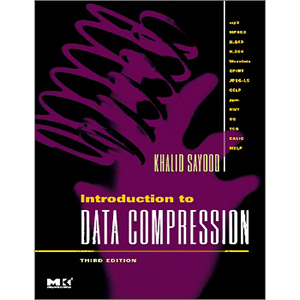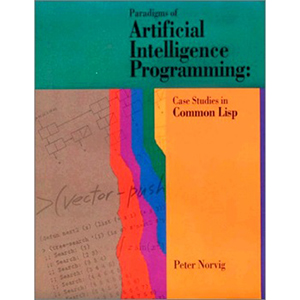| Developing High Quality Data Models Posted: 11 Apr 2013 09:16 AM PDT 
Book Description A multitude of problems is likely to arise when developing data models. With dozens of attributes and millions of rows, data modelers are always in danger of inconsistency and inaccuracy. The development of the data model itself could result in difficulties presenting accurate data. The need to improve data models begins with getting it right in the first place. Using real-world examples, Developing High Quality Data Models walks the reader through identifying a number of data modeling principles and analysis techniques that enable the development of data models that both meet business requirements and have a consistent basis. The reader is presented with a variety of generic data model patterns that both exemplify the principles and techniques discussed and build upon one another to give a powerful and integrated generic data model. This model has wide applicability across many disciplines in government and industry, including but not limited to energy exploration, healthcare, telecommunications, transportation, military defense, transportation, and more. - Uses a number of common data model patterns to explain how to develop data models over a wide scope in a way that is consistent and of high quality
- Offers generic data model templates that are reusable in many applications and are fundamental for developing more specific templates
- Develops ideas for creating consistent approaches to high quality data models
Table of Contents
Chapter 1. Introduction
Chapter 2. Entity Relationship Model Basics
Chapter 3. Some types and uses of data models
Chapter 4. Data models and enterprise architecture
Chapter 5. Some observations on data models and data modeling
Chapter 6. Some General Principles for Conceptual, Integration and Enterprise Data Models
Chapter 7. Applying the principles for attributes
Chapter 8. General principles for relationships
Chapter 9. General principles for entity types
Chapter 10. Motivation and overview for an ontological framework
Chapter 11. Spatio-temporal extents
Chapter 12. Classes
Chapter 13. Intentionally constructed objects
Chapter 14. Systems and system components
Chapter 15. Requirements specifications
Chapter 16. Concluding Remarks
Chapter 17. The HQDM Framework Schema Book Details - Paperback: 408 pages
- Publisher: Morgan Kaufmann (December 2010)
- Language: English
- ISBN-10: 0123751063
- ISBN-13: 978-0123751065
Note: There is a file embedded within this post, please visit this post to download the file. Related Books The post Developing High Quality Data Models appeared first on Wow! eBook. |
| Wireless Networking Complete Posted: 11 Apr 2013 09:12 AM PDT 
Book Description Given the explosion of new wireless communications techniques and the host of wireless network technologies and applications currently available or on the drawing board, it is safe to say that we are in the midst of a wireless networking revolution. Industry adoption of next-generation specifications will provide a substantial boost to the market for wireless multimedia networking, prompting growth in excess of 50 million wireless network devices by 2010, according to a market study by Parks Associates. A compilation of critical content from key MK titles published in recent years on wireless networking and communications. Individual chapters are organized as one complete reference that allows it to be used as a 360 degree view from our best- selling authors for those interested in new and developing aspects of wireless network technology. - Chapters contributed by recognized experts in the field cover theory and practice of wireless network technology, allowing the reader to develop a new level of knowledge and technical expertise.
- Up-to-date coverage of wireless networking issues facilitates learning and lets the reader remain current and fully informed from multiple viewpoints.
- Presents methods of analysis and problem-solving techniques, enhancing the reader’s grasp of the material and ability to implement practical solutions.
Table of Contents
Chapter 1. Supporting Wireless Technologies
Chapter 2. Wireless Networks
Chapter 3. An Overview of Wireless Systems
Chapter 4. Wireless Application Protocol
Chapter 5. Wireless Local Area Networks
Chapter 6. Fourth Generation Systems and New Wireless Technologies
Chapter 7. Mesh Networks: Optimal Routing and Scheduling
Chapter 8. Ad Hoc Wireless Sensor Networks (WSNs)
Chapter 9. Sensor Network Platforms and Tools
Chapter 10. Mobile IP
Chapter 11. Mobile IPv6
Chapter 12. Security and Survivability of Wireless Systems Book Details - Hardcover: 444 pages
- Publisher: Morgan Kaufmann (August 2009)
- Language: English
- ISBN-10: 0123750776
- ISBN-13: 978-0123750778
Note: There is a file embedded within this post, please visit this post to download the file. Related Books The post Wireless Networking Complete appeared first on Wow! eBook. |
| Customizable Embedded Processors Posted: 11 Apr 2013 09:10 AM PDT 
Book Description Customizable processors have been described as the next natural step in the evolution of the microprocessor business: a step in the life of a new technology where top performance alone is no longer sufficient to guarantee market success. Other factors become fundamental, such as time to market, convenience, energy efficiency, and ease of customization. This book is the first to explore comprehensively one of the most fundamental trends which emerged in the last decade: to treat processors not as rigid, fixed entities, which designers include “as is" in their products; but rather, to build sound methodologies to tailor-fit processors to the specific needs of such products. This book addresses the goal of maintaining a very large family of processors, with a wide range of features, at a cost comparable to that of maintaining a single processor. - First book to present comprehensively the major ASIP design methodologies and tools without any particular bias.
- Written by most of the pioneers and top international experts of this young domain.
- Unique mix of management perspective, technical detail, research outlook, and practical implementation.
Table of Contents
Part I: Opportunities and Challenges
Chapter 1. From Prêt-à-Porter to Tailor-Made
Chapter 2. Opportunities for Application-Specific Processors: The Case of Wireless Communications
Chapter 3. Customizing Processors: Lofty Ambitions, Part II: Aspects of Processor Customization
Chapter 4. Architecture Description Languages
Chapter 5. C Compiler Retargeting
Chapter 6. Automated Processor Configuration and Instruction Extension
Chapter 7. Automatic Instruction-Set Extensions
Chapter 8. Challenges to Automatic Customization
Chapter 9. Coprocessor Generation from Executable Code
Chapter 10. Datapath Synthesis
Chapter 11. Instruction Matching and Modeling
Chapter 12. Processor Verification
Chapter 13. Sub-RISC Processors Part III: Case Studies
Chapter 14. Application Specific Instruction Set Processor for UMTS-FDD Cell Search
Chapter 15. Hardware/Software Tradeoffs for Advanced 3G Channel Decoding
Chapter 16. Application Code Profiling and ISA Synthesis on MIPS32
Chapter 17. Designing Soft Processors for FPGAs Book Details - Hardcover: 528 pages
- Publisher: Morgan Kaufmann (July 2006)
- Language: English
- ISBN-10: 0123695260
- ISBN-13: 978-0123695260
Note: There is a file embedded within this post, please visit this post to download the file. Related Books The post Customizable Embedded Processors appeared first on Wow! eBook. |
| Introduction to Data Compression, 3rd Edition Posted: 11 Apr 2013 09:01 AM PDT 
Book Description Each edition of Introduction to Data Compression has widely been considered the best introduction and reference text on the art and science of data compression, and the third edition continues in this tradition. Data compression techniques and technology are ever-evolving with new applications in image, speech, text, audio, and video. The third edition includes all the cutting edge updates the reader will need during the work day and in class.
Khalid Sayood provides an extensive introduction to the theory underlying today's compression techniques with detailed instruction for their applications using several examples to explain the concepts. Encompassing the entire field of data compression Introduction to Data Compression, includes lossless and lossy compression, Huffman coding, arithmetic coding, dictionary techniques, context based compression, scalar and vector quantization. Khalid Sayood provides a working knowledge of data compression, giving the reader the tools to develop a complete and concise compression package upon completion of his book. - New content added on the topic of audio compression including a description of the mp3 algorithm
- New video coding standard and new facsimile standard explained
- Completely explains established and emerging standards in depth including JPEG 2000, JPEG-LS, MPEG-2, Group 3 and 4 faxes, JBIG 2, ADPCM, LPC, CELP, and MELP
- Source code provided via companion web site that gives readers the opportunity to build their own algorithms, choose and implement techniques in their own applications
Table of Contents
Chapter 1. Introduction
Chapter 2. Lossless Compression
Chapter 3. Huffman Coding
Chapter 4. Arithmetic Coding
Chapter 5. Dictionary Techniques
Chapter 6. Context Based Compression
Chapter 7. Lossless Image Compression
Chapter 8. Lossy Coding
Chapter 9. Scalar Quantization
Chapter 10. Vector Quantization
Chapter 11. Differential Encoding
Chapter 12. Transforms, Subbands, and Wavelets
Chapter 13. Transform Coding
Chapter 14. Subband Coding
Chapter 15. Wavelet-Based Compression
Chapter 16. Audio Coding
Chapter 17. Analysis/Synthesis and Analysis by Synthesis Schemes
Chapter 18. Video Compression Appendix A. Probability and Random Processes
Appendix B. A Brief Review of Matrix Concepts
Appendix C. The Root Lattices Book Details - Hardcover: 704 pages
- Publisher: Morgan Kaufmann; 3rd Edition (December 2005)
- Language: English
- ISBN-10: 012620862X
- ISBN-13: 978-0126208627
Note: There is a file embedded within this post, please visit this post to download the file. Related Books The post Introduction to Data Compression, 3rd Edition appeared first on Wow! eBook. |
| Mathematical Optimization in Computer Graphics and Vision Posted: 11 Apr 2013 08:56 AM PDT 
Book Description Mathematical optimization is used in nearly all computer graphics applications, from computer vision to animation. This book teaches readers the core set of techniques that every computer graphics professional should understand in order to envision and expand the boundaries of what is possible in their work. Study of this authoritative reference will help readers develop a very powerful tool- the ability to create and decipher mathematical models that can better realize solutions to even the toughest problems confronting computer graphics community today. The authors are renowned researchers from IMPA, the Brazilian National Institute for Pure and Applied Mathematics. - Distils down a vast and complex world of info on optimization into one short, self-contained volume especially for computer graphics
- Helps CG professionals identify the best technique for solving particular problems quickly, by categorizing the most effective algorithms by application
- Keeps readers current by supplementing the focus on key, classic methods with special end-of-chapter sections on cutting-edge developments
Table of Contents
Chapter 1. Computer Graphics
Chapter 2. Optimization: An Overview
Chapter 3. Optimization and Computer Graphics
Chapter 4. Variational Optimization
Chapter 5. Continuous Optimization
Chapter 6. Combinatorial Optimization
Chapter 7. Global Optimization
Chapter 8. Probability and Optimization Book Details - Hardcover: 304 pages
- Publisher: Morgan Kaufmann (April 2008)
- Language: English
- ISBN-10: 0127159517
- ISBN-13: 978-0127159515
Note: There is a file embedded within this post, please visit this post to download the file. Related Books The post Mathematical Optimization in Computer Graphics and Vision appeared first on Wow! eBook. |
| Paradigms of Artificial Intelligence Programming Posted: 11 Apr 2013 08:52 AM PDT 
Book Description Paradigms of AI Programming is the first text to teach advanced Common Lisp techniques in the context of building major AI systems. By reconstructing authentic, complex AI programs using state-of-the-art Common Lisp, the book teaches students and professionals how to build and debug robust practical programs, while demonstrating superior programming style and important AI concepts. The author strongly emphasizes the practical performance issues involved in writing real working programs of significant size. Chapters on troubleshooting and efficiency are included, along with a discussion of the fundamentals of object-oriented programming and a description of the main CLOS functions. This volume is an excellent text for a course on AI programming, a useful supplement for general AI courses and an indispensable reference for the professional programmer. Table of Contents
Part I: Introduction to Common Lisp
Chapter 1. Introduction to Lisp
Chapter 2. A Simple Lisp Program
Chapter 3. Overview of Lisp Part II: Early AI Programs
Chapter 4. GPS: The General problem Solver
Chapter 5. Eliza: Dialog with a Machine
Chapter 6. Building Software Tools
Chapter 7. Student: Solving Algebra Word Problems
Chapter 8. Symbolic Mathematics: A Simplification Program Part III: Tools and Techniques
Chapter 9. Efficiency Issues
Chapter 10. Low-Level Efficiency Issues
Chapter 11. Logic Programming
Chapter 12. Compiling Logic programs
Chapter 13. Object-Oriented Programming
Chapter 14. Knowledge Representation and Reasoning Part IV: Advanced AI Programs
Chapter 15. Symbolic Mathematics with Canonical Forms
Chapter 16. Expert Systems
Chapter 17. Line-Diagram Labeling by Constraint Satisfaction
Chapter 18. Search and the Game of Othello
Chapter 19. Introduction to Natural Language
Chapter 20. Unification Grammars
Chapter 21. A Grammar of English Part V: The Rest of Lisp
Chapter 22. Scheme: An Uncommon Lisp
Chapter 23. Compiling Lisp
Chapter 24. ANSI Common Lisp
Chapter 25. Troubleshooting Book Details - Paperback: 946 pages
- Publisher: Morgan Kaufmann (October 1991)
- Language: English
- ISBN-10: 1558601910
- ISBN-13: 978-1558601918
Note: There is a file embedded within this post, please visit this post to download the file. Related Books The post Paradigms of Artificial Intelligence Programming appeared first on Wow! eBook. |








Tidak ada komentar:
Posting Komentar